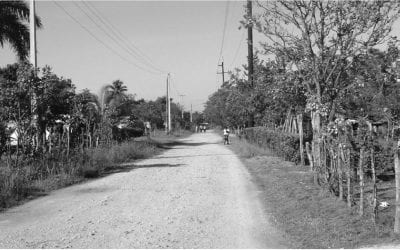A Review of Inheriting the City: The Children of Immigrants Come of Age
The U.S. Immigration Success Story

Inheriting the City: The Children of Immigrants Come of Age By Phillip Kasinitz, John H. Mollenkopf, Mary C. Waters and Jennifer Holdaway. Harvard University Press and Russell Sage Foundation, Cambridge and New York, 2008. 432 pages.
As an immigrant trying to understand urban diversity here, I come back time and again to the U.S. writer E.B. White’s often-cited passage in Here is New York (1948) in search of useful clues. “There are roughly three New Yorks. There is, first, the New York of the man or woman who was born there, who takes the city for granted and accepts its size, its turbulence as natural and inevitable. Second, there is the New York of the commuter — the city that is devoured by locusts each day and spat out each night. Third, there is New York of the person who was born somewhere else and came to New York in quest of something (p.1).” And yet, as a social scientist, I cannot help but think that there is a fourth New York, the New York of the people who were born there to immigrant parents and for whom the city can never be taken for granted, as the city is the very embodiment of their parents’ hopes and dreams. The story of the fourth New York is one that is rarely told, and yet it is also a quintessential American one.
Inheriting the City is about such a story—the lives of children of immigrants who are now coming of age in New York City. At the dawn of the 21st century, immigrants and their children accounted for one in four of the total U.S. population. Specifically, the immigrant second generation—the children of at least one immigrant parent born in the United States or someone who arrived before the age of 12—made up one out of every four Americans under 18 and one out of every six of those between the ages of 18 to 32. From small towns in rural Iowa to larger cities in metropolitan Los Angeles, immigration is now the main driving force behind the changing demographics of America. By all projections, the United States in 2050 will be much more racially, ethnically, culturally and religiously diverse than any other point in our history. Therefore, this story is not just unique to New York City, as it foreshadows the transformations unfolding across the country, providing insights into what U.S. society will be like in the century ahead.
In this ground-breaking work, Philip Kasinitz, John Mollenkopf, Mary Waters and Jennifer Holdaway provide the first comprehensive look at the post-1965 immigrant second generation as its members enter young adulthood, comparing and contrasting their experience with that of the native-born. Drawing upon ten years of original research, Inheriting the City is truly impressive in its scope and contribution. The book is based on a recent study of the children of Chinese, Dominican, South American, Russian Jewish and West Indian immigrants––and their native-born counterparts––whites, blacks and Puerto Ricans in New York City. The study also significantly extends previous research on West Indians in New York City conducted by one of the book’s co-author––Mary Waters––who is currently the M.E. Zukerman Professor of Sociology at Harvard. Specifically, the study relied on a random survey of 3415 young adults between the ages of 18 and 32 at the time the study began in 1998 and two rounds of in-depth face-to-face interviews with hundreds of those same respondents. To fully grasp the fluidity of the second generation experience within specific institutional contexts, Kasinitz and his colleagues also relied on insights drawn from participant observations conducted in a range of organizational setting from educational institutions and workplaces to community and religious organizations. Combing through what must have been a mountain of data, the story they tell is both fascinating and captivating.
To place this in context, the study was designed to address concerns raised by academic researchers and policy makers over the assimilation prospect of the new second generation. Specifically, the ethnic/racial distinctiveness of post-1965 immigrants has led to speculations about the significant barriers to full integration into American life. What Kasinitz and his colleagues uncover is both surprising and encouraging, as their main findings point to the unmistakable socioeconomic success of the second generation. From educational and occupational achievement to earnings and labor force participation, the immigrant second-generation is upwardly mobile both in comparison to their first-generation parents and to the native-born reference group of the same race.
Specifically, second-generation West Indians fare better than native blacks; South Americans and Dominicans outperform Puerto Ricans; Russian Jews and Chinese have better outcomes than native whites. More importantly, members of the second-generation have decisively joined the mainstream, finding themselves in integrated school and work settings. In addition to speaking English fluently, they have also left behind the ethnic economies and menial jobs in which many of their parents toiled days and nights so that their offspring would have a shot at the American dream. Instead of feeling torn “between two worlds,” as classic accounts of acculturation would suggest, the new second-generation not only combine the best of both worlds with great ease, but also are remaking the U.S. mainstream with remarkable creativity. The authors further argue that the ability to select the best traits from both their immigrant parents and their American peers yield a distinctive second-generation advantage by providing the second generation with a wider range of options and strategies to pursue in life.
Overall, the nine substantive chapters in this volume are superb and build tightly on each other, covering a striking range of topics from ethnic/racial identity formation and acculturation to school and work to marriage and family to civic and political participation to prejudice and discrimination. Drawing on the interview data, the chapter on ethnic and racial identity lays out the book’s overall argument by exploring how identity choices among their respondents are highly fluid, situational and contextual. Furthermore, how young adults sort themselves into ethnic and racial groups carries important implications beyond mere subjective identification. To the extent that our society remains fundamentally unequal along ethnic and racial lines across a range of outcomes, ethnic group membership implies access to differential resources, settlement in different neighborhoods, entry to public schools with differential quality, and reliance on co-ethnic communities with different levels of institutional support. These structural factors, in turn, create a set of opportunities for and constraints on socioeconomic mobility.
Whereas traditional sociological accounts of racial and ethnic inequality tend to emphasize structural factors such as residential segregation, neighborhood isolation, low-quality schools and discrimination in the labor market, the authors break new ground by concluding that culture also matters in explaining divergent outcomes across groups. More specifically, differences both in structural positions and in cultural expectations together explain why measurable outcomes significantly vary across groups: for example, the dismal school performance of Dominicans and Puerto Ricans in contrast to that of South Americans and the continuing disadvantages in the labor market among native blacks in contrast to West Indians.
Inheriting the City is as much about the contemporary second-generation’s coming-of-age experience as it is about how their sheer presence is once again reshaping the U.S. mainstream. The book is extremely well-written and very engaging throughout, free of academic jargon and filled with stories that vividly illustrate the enduring significance of immigration in the making and remaking of the American society. With four co-authors, the book reads extremely well and is surprisingly coherent both in its main arguments and its unified authorial voice. A monumental volume that significantly contributes to our understanding of the new second-generation, this book is destined to be a classic reference for academic researchers in the decades to come and a must-read for the general audience and policy makers who seek to understand the complexity surrounding assimilation in American life today.
While underscoring the success of the second-generation, the authors also somberly note the continuing disadvantages among our nation’s native minorities––Puerto Ricans and African Americans. Their guarded optimism about the future of America’s race relations and diversity is most refreshing in light of the pessimistic predictions about the new second generation. While acknowledging that important ethnic/racial differences exist and these differences do matter, Kasinitz and his colleagues also point out that their respondents are reaching out across these ethnic divisions to forge new identities and alliances. In fact, one cannot help but admire the authors’ sensitivity as they recount their respondents’ multifaceted experiences, at-times contradictory perspectives, but fundamentally heroic struggles to make it in a tough city like New York. And yet, these young men and women do not for a moment take the city for granted because this is the very city that welcomed their parents with open arms and provided them with abundant opportunities. And their success story is one that this book has so compellingly told.
Related Articles
Editor’s Letter: The Sixties
When I first started working on this ReVista issue on Colombia, I thought of dedicating it to the memory of someone who had died. Murdered newspaper editor Guillermo Cano had been my entrée into Colombia when I won an Inter American Press Association fellowship in 1977. Others—journalist Penny Lernoux and photographer Richard Cross—had also committed much of their lives to Colombia, although their untimely deaths were …
The True Impact of the Peace Corps: Returning from the Dominican Republic ’03-’05
I am an RPCV: a Returned Peace Corps Volunteer. For me the Peace Corps was an intense life experience, above anything else. As I continue to reflect on it, I am struck with the many and varied ways in which it continues to affect my life. As a PCV in the Dominican Republic from September 2003 to November 2005, I lived, worked, and learned in a small sugar cane-dependent community two hours outside of Santo Domingo…
In the Shadow of JFK: One Peace Corps Experience
I am often asked about the Peace Corps by students and recent graduates. The most frequent questions are, “why join?”, “what did you do?”, and “what has it meant for your career?” Here is my story. My earliest recollection of international curiosity was in the fourth grade when Sister Margaret Thomas described her experience as a recently returned missionary in Bangladesh. In high school, my sister Mary went to Peru on …



